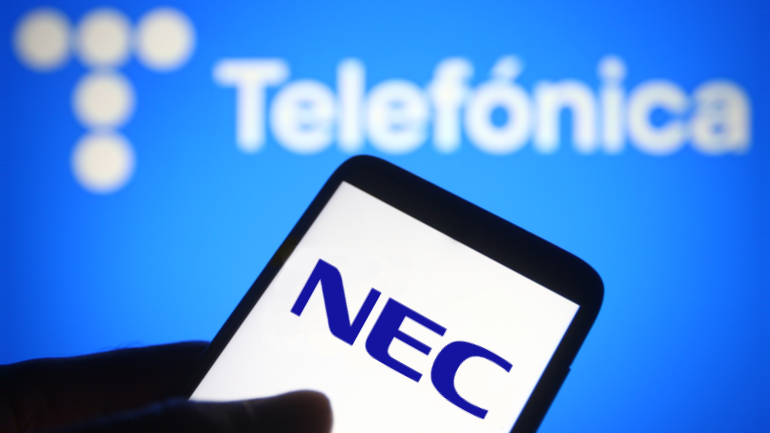Swedish telecom giant, Ericsson, is making strides in harnessing the virtues of Open and Cloud RAN through a series of noteworthy offerings and trailblazing collaborations. Recent ventures with Telefónica on joint Cloud RAN trials underline a shared vision for a dynamic, open network architecture. This exploration goes beyond mainstream, incorporating automation and intelligent orchestration, with potential benefits to macro networks and enterprise applications alike. Ericsson’s commitment to open standards is further emphasized through successful deployment of radio hardware ready for next-gen open fronthaul technology and an intriguing pledge to offer an expansive Open RAN portfolio by next year.
Vodafone’s collaboration with Salience Labs and iPronics aims to advance open radio access networks (open RAN) by harnessing the potential of silicon photonic chips. This light-based technology could promise enhanced network programmability and ultra-low latency powered by their increased speed and reduced energy consumption — elevating critical 5G capabilities. With silicon photonics making waves in data centers, the industry, poised for rapid growth, radiates intrigue on the horizon. Yet, it also questions current cost dynamics, especially around open RAN technology.
The unveiling of Apple’s four new iPhone models sparked a surprising underwhelm in the tech community. Meanwhile, debates rose regarding China’s nimble navigation around US tech embargoes, especially regarding iPhone use. No less intriguing were the discussions around Open RAN – tech pioneers revisited this initiative with the UK’s recent efforts to regain Open RAN momentum.
Prominent UK telecom companies like BT, VMO2, and Vodafone have been selected beneficiaries of government funding for research into Open RAN technology. Innovative projects, with a focus ranging from energy efficiency to security, will share in the £88 million ($121 million) funding. The main goal is to figure out whether Open RAN can rival traditional RAN, especially in high-traffic areas and rural deployments, in terms of cost, reliability and energy consumption.
Deutsche Telekom, in collaboration with AirHop, Juniper Networks, VIAVI Solutions, and VMware, has been testing the waters to leverage telecom technology bound by Open RAN specifications. Treading an intriguing path of innovation, they trialed Non-RT RIC technology by performing a RAN closed-loop optimization proof, embraced by ONAP and Open RAN standards. The journey unfolded two pivotal use case scenarios revolving around PCI optimization and energy-saving dynamics powered by AI and machine learning.
Notable declines in Open RAN and vRAN revenues for Q2 2023 have been reported by Dell’Oro, suggesting a potential year-on-year reduction if trends continue. While shrinkage was notable across the Americas and the Asia Pacific region, Europe continues to enjoy growth. Nevertheless, the overall RAN market lacks significant growth, making future predictions challenging about these emerging technologies’ share when 6G becomes widespread.
Dell’ Oro Group has adjusted its predictions for the global Open RAN market share, a decision marking a first for the research company. They stress the necessary transformation in the RAN market will be far from smooth, while also affirming Open RAN’s permanence. Europe demonstrates a cautious approach, leaning more towards traditional RAN in 5G setups. Past bullish forecasts have not dramatically influenced the industry, prompting RAN providers to investigate alternative avenues with brownfield operators. Despite minor signs of rapid progression, Open RAN’s maturity in this field remains uncertain.
The US and India strengthen their strategic partnership, focusing on 6G research, Open RAN, and semiconductors, while collaborating on technology sharing, co-development, and co-production opportunities between industry, government, and academia.
Telefónica and NEC Corporation announced an agreement to undertake pre-commercial Open Radio Access Network (Open RAN) tests in Telefonica’s four key worldwide markets: Spain, Germany, the United Kingdom and Brazil. This is a step toward Telefonica’s goal of achieving a 50% expansion of their current radio network based on Open RAN by 2025. According to a joint press release, Telefonica will perform open RAN trials in Spain, Germany, the United Kingdom and Brazil, with the objective of offering commercial alternatives to at least 800 locations across the four countries beginning in 2022. Under the terms of the agreement, NEC will serve as the primary system integrator for the implementation and testing of multi-vendor Open RAN solutions with the Telefonica group’s operational businesses. Telefónica and NEC will also cooperate with the newly formed Telefónica Technology and Automation Lab in Madrid to validate and implement cutting-edge Open RAN technologies and…
Two Japanese companies, Rakuten Mobile and NEC Corporation, have announced the signing of a Memorandum of Understanding (MoU) to promote Open RAN in mobile telecommunications markets worldwide. The MoU is based on Rakuten’s current partnership with NEC, where NEC supplies 5G radio equipment to the operator. The pair is also jointly working on developing a Rakuten standalone 5G core. Under the Memorandum of Understanding, Rakuten Mobile and NEC will continue to expand their local collaboration to provide 5G and 4G radios and engineering services for Open RAN systems that are compliant with O-RAN specifications. These services will be applicable to markets worldwide and will boost the global development of the Rakuten Communications Platform (RCP). RCP is Rakuten Mobile’s fully virtualized and containerized cloud-based mobile network platform, enabling telecom businesses to station virtual networks rapidly and inexpensively. Tareq Amin, executive vice president and CTO at Rakuten Mobile, said: “Rakuten…












